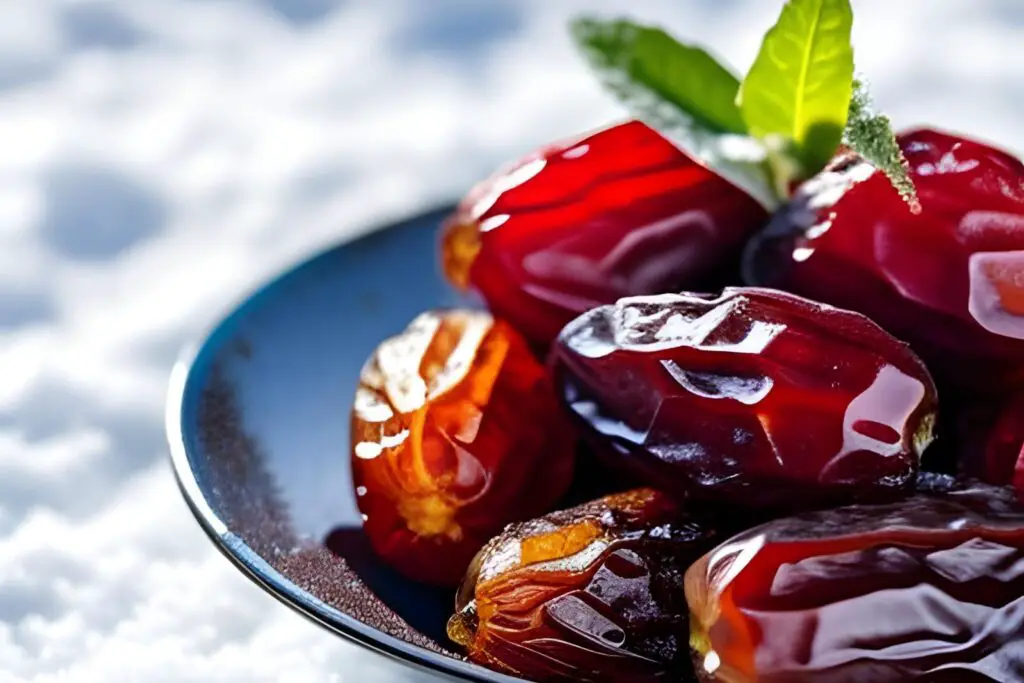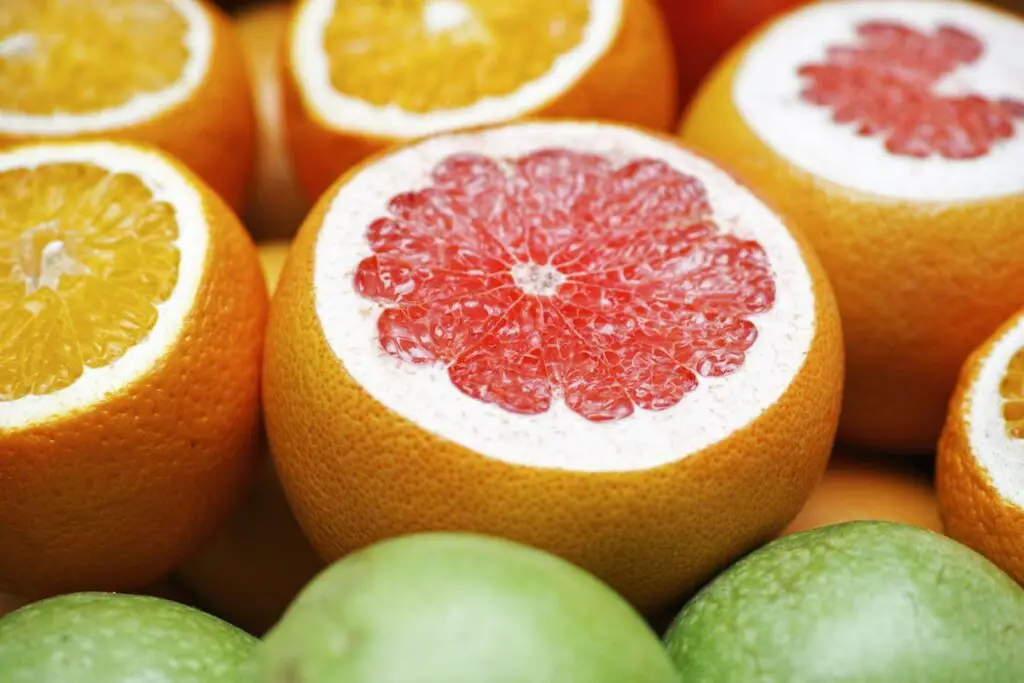
Cherry tomatoes, with their juicy and sweet flavor, are a delightful addition to salads, pasta dishes, and various recipes. Whether you have a bountiful harvest from your garden or want to preserve the freshness of store-bought cherry tomatoes, freezing them is an excellent way to enjoy their vibrant taste even when they’re out of season. By following a few simple steps, you can freeze cherry tomatoes to preserve their flavor, texture, and nutritional value for later use in your favorite culinary creations.
Here are the simple steps to freeze cherry tomatoes:
Step 1: Select ripe and fresh cherry tomatoes
Selecting ripe and fresh cherry tomatoes is crucial for the quality of the frozen tomatoes for a few reasons:
- Flavor: Ripe cherry tomatoes will have the best flavor profile. They will be sweeter and more flavorful compared to under-ripe tomatoes. When you freeze the tomatoes, the flavor will be preserved, allowing you to enjoy the same delicious taste when you use them later.
- Texture: Firm and plump cherry tomatoes are ideal for freezing. If the tomatoes are overly ripe or soft, they may become mushy when thawed. By choosing firm tomatoes, you can maintain a better texture after freezing and thawing.
- Nutrient retention: Fresh and ripe tomatoes are packed with essential nutrients, including vitamins, minerals, and antioxidants. The freezing process can cause some nutrient loss, but starting with high-quality, fully ripe tomatoes ensures that you’ll retain as many nutrients as possible in the frozen tomatoes.
- Aesthetics: Tomatoes without any signs of bruising, blemishes, or mold will look visually appealing even after freezing. By selecting flawless tomatoes, you’ll have beautiful frozen cherry tomatoes that can be used for garnishing, salads, or other dishes where appearance matters.
In summary, starting with ripe and fresh cherry tomatoes ensures that the frozen tomatoes maintain their flavor, texture, nutritional value, and visual appeal. It’s important to prioritize quality at the time of freezing to achieve the best results when using the tomatoes later on.
Step 2: Wash and dry the tomatoes
Washing and drying the cherry tomatoes before freezing them is important for a couple of reasons:
- Cleanliness: Washing the tomatoes removes any dirt, dust, or other contaminants that may be present on their surface. This is especially important if you harvested the tomatoes from your own garden or bought them from a local market. By cleaning the tomatoes, you ensure that no unwanted particles are frozen along with them.
- Freezing process: Moisture on the tomato’s surface can lead to the formation of ice crystals during freezing. These ice crystals can cause the tomatoes to stick together, making them difficult to separate when you want to use them later. By drying the tomatoes thoroughly, you reduce the amount of moisture on their surface, minimizing the chances of them freezing together.
- Texture preservation: Excess moisture can affect the texture of the tomatoes after freezing. If there is residual water on the tomatoes, it can contribute to the formation of ice crystals, which can lead to cell damage. This can result in a mushy texture when the tomatoes are thawed. By ensuring the tomatoes are dry before freezing, you help preserve their natural texture and avoid any unwanted changes.
It’s important to note that when drying the tomatoes, you should be gentle to avoid bruising or damaging them. Patting them dry with a kitchen towel or allowing them to air dry on a clean surface are both effective methods.
Can you freeze cherry tomatoes with the skins on?
Yes, you can freeze cherry tomatoes with the skins on. The skins of cherry tomatoes are thin and tender, and they do not need to be removed before freezing. Freezing the cherry tomatoes with their skins intact helps preserve their structure and prevents the loss of juices and flavor during the freezing process.
Should I remove the seeds before freezing cherry tomatoes?
It is not necessary to remove the seeds before freezing cherry tomatoes. The seeds are small and not typically a concern when freezing. Freezing the cherry tomatoes with their seeds intact will help maintain their natural flavor and texture.
Step 3: Determine the freezing method
Deciding whether to freeze cherry tomatoes whole or halved depends on personal preferences and the intended use of the tomatoes. Here are some factors to consider:
- Preservation of shape: Freezing the cherry tomatoes whole will preserve their natural shape. This can be desirable if you plan to use them as a garnish, in salads, or in dishes where the appearance of the whole cherry tomato is important. Frozen whole cherry tomatoes can also be used as a decorative element in drinks or appetizers.
- Versatility in recipes: Halving the cherry tomatoes before freezing can make them more versatile for certain recipes. By cutting them in half, you increase their surface area, which can be beneficial if you plan to use them in sauces, soups, or stews where you want the tomatoes to release their juices more easily. Halved frozen cherry tomatoes can also be added directly to pasta dishes or used as a pizza topping.
- Convenience: Consider the convenience factor as well. If you prefer minimal preparation when using frozen cherry tomatoes, freezing them whole might be the better option. You can easily grab a handful of frozen tomatoes and use them as needed without any additional prep work. On the other hand, if you don’t mind the extra step of halving them, it can provide more flexibility in how you incorporate them into various dishes.
Ultimately, the decision between freezing cherry tomatoes whole or halved depends on your personal preferences, the specific recipes you plan to use them in, and the desired outcome in terms of appearance and convenience. You can also consider freezing a portion of the cherry tomatoes whole and halving the rest to have options for different culinary applications.
Step 4: Prepare the tomatoes for freezing
Preparing the cherry tomatoes for freezing involves arranging them on a baking sheet in a specific manner based on whether you’re freezing them whole or halved. Here’s why:
- Whole cherry tomatoes: When freezing whole cherry tomatoes, it’s important to place them on a baking sheet lined with parchment paper in a single layer without touching each other. This arrangement allows for proper air circulation around each tomato, ensuring that they freeze evenly and quickly. If the tomatoes were placed too close together or piled on top of each other, they could freeze together, making it difficult to separate them later on.
- Halved cherry tomatoes: If you prefer to freeze halved cherry tomatoes, the first step is to cut them in half lengthwise and remove the stem area. By halving the tomatoes, you increase their surface area, which promotes faster freezing and easier release of juices when used in recipes later on. It also allows for more uniform cooking if you choose to use them in sauces, stews, or other cooked dishes.
Arranging the halved tomatoes cut-side up on the baking sheet is important to prevent any moisture or juices from pooling in the cavities left by the removed stems. Placing them cut-side up helps to retain the tomato’s structure and prevents the cut sides from sticking to the baking sheet during freezing. This arrangement also allows any excess moisture to evaporate more easily during the freezing process.
Can you freeze cherry tomatoes without blanching them?
Yes, you can freeze cherry tomatoes without blanching them. Blanching is a process of briefly immersing food in boiling water and then transferring it to an ice bath. While blanching can help preserve the color and texture of some vegetables, cherry tomatoes have thin skin that doesn’t require blanching. Freezing them directly without blanching is a simple and effective method for preserving their freshness and flavor.
Can I freeze cherry tomatoes that are already cut or sliced?
While it is possible to freeze cherry tomatoes that are already cut or sliced, it’s important to note that their texture may change upon thawing. Sliced cherry tomatoes can become softer and more watery after freezing, making them better suited for cooked dishes rather than fresh applications. If you intend to use the thawed cherry tomatoes in salads or other raw preparations, it’s recommended to freeze them whole for better texture retention.
Step 5: Flash-freeze the tomatoes
Flash freezing is the process of rapidly freezing food items at very low temperatures to preserve their quality and prevent the formation of large ice crystals. When it comes to cherry tomatoes, flash-freezing them individually before storing them in bulk is beneficial for a few reasons:
- Prevent clumping: Flash-freezing the cherry tomatoes individually on a baking sheet ensures that they freeze separately without sticking to each other. By allowing enough space between the tomatoes during freezing, they won’t clump together into a solid mass. This makes it easier to retrieve the desired quantity of tomatoes when you only need a portion without thawing the entire batch.
- Preserve texture: Flash freezing helps to maintain the texture of the cherry tomatoes. The quick freezing process prevents the formation of large ice crystals, which can cause cell damage and lead to a mushy texture when the tomatoes are thawed. Individual flash freezing ensures that each tomato freezes quickly and evenly, preserving its natural texture and structure.
- Retain flavor and nutrients: Flash freezing minimizes the exposure of cherry tomatoes to oxygen and helps preserve their flavor and nutrient content. The rapid freezing process locks in the natural flavors and essential nutrients, ensuring that the frozen tomatoes retain their taste and nutritional value for an extended period.
To flash freeze the cherry tomatoes, it’s important to leave them in the freezer for a few hours or until they are completely solid. Once they are frozen, you can transfer them to a freezer-safe container or bag for long-term storage. This method allows you to easily grab the desired quantity of cherry tomatoes without thawing the entire batch, maintaining their quality and making them more convenient to use in various recipes.
Step 6: Package the tomatoes
Packaging the frozen cherry tomatoes into freezer-safe bags or airtight containers is an essential step to protect them from freezer burn and maintain their quality. Here’s why it’s important to package them properly:
- Freezer burn prevention: Freezer burn occurs when the surface of frozen food is exposed to air, leading to dehydration and the formation of ice crystals. By transferring the cherry tomatoes into freezer-safe bags or containers and removing excess air, you create a protective barrier that helps prevent freezer burn. This ensures that the tomatoes maintain their texture, flavor, and overall quality during storage.
- Extended shelf life: Proper packaging helps to extend the shelf life of frozen cherry tomatoes. By sealing them in airtight containers or bags, you minimize the exposure to air and reduce the risk of moisture loss and oxidation. This helps to preserve the tomatoes’ freshness, taste, and nutrient content over an extended period, allowing you to enjoy them for longer without a significant decline in quality.
- Portion control and convenience: Dividing the frozen cherry tomatoes into smaller portions before packaging allows for easier portion control and convenience when using them in recipes. When you freeze the tomatoes in smaller amounts, you can easily thaw only what you need for a specific dish, minimizing waste and ensuring that you have the right quantity on hand without thawing the entire batch.
When packaging the tomatoes, it’s important to remove as much air as possible from the bags or containers before sealing them. This can be done by pressing out the air manually or using vacuum sealing techniques. Removing excess air helps to prevent freezer burn and maintain the quality of the frozen tomatoes.
Can I freeze cherry tomatoes in a Ziploc bag?
Yes, you can freeze cherry tomatoes in a Ziploc bag. Ziploc bags are commonly used for freezing various foods, including cherry tomatoes. Make sure to remove as much air as possible from the bag before sealing it to minimize the risk of freezer burn. Label the bag with the variety and freezing date for easy identification in the freezer.
Step 7: Label and date the packages
Labeling and dating the packages of frozen cherry tomatoes is a simple yet crucial step to help you keep track of their variety and freezing date. Here’s why it’s important:
- Variety identification: Different varieties of cherry tomatoes may have distinct flavors, sizes, or colors. By labeling each package with the type of cherry tomatoes, you can easily identify the specific variety when you want to use them. This information allows you to choose the right variety for recipes that call for a specific flavor profile or appearance.
- Freezing date tracking: Freezing fruits and vegetables preserves their quality, but they can still gradually lose flavor and texture over time. By dating the packages, you have a reference point for when the cherry tomatoes were frozen. This information enables you to use them in the proper order, ensuring that you prioritize the oldest packages first. Using the tomatoes in a first-in, first-out (FIFO) manner helps you maintain optimal quality and minimize waste.
- Planning and organization: Labeling and dating the packages of frozen cherry tomatoes promote better planning and organization in your freezer. With clear labeling, you can easily locate the desired package when you need it without rummaging through the freezer. It streamlines meal preparation by providing quick information on the variety and freezing date, saving you time and effort.
To label the packages, you can use adhesive labels, freezer tape, or permanent markers. Write down the variety of cherry tomatoes (e.g., “Sweet 100,” “Sun Gold”) and the date of freezing (e.g., “Frozen on DD/MM?YYYY”). Place the label on the package where it is easily visible.
Other related questions
How do I defrost cherry tomatoes?
To defrost cherry tomatoes, transfer the desired amount from the freezer to the refrigerator. Allow them to thaw slowly in the fridge for several hours or overnight. As they thaw, the tomatoes will soften and release some liquid. Once thawed, use them within 2-3 days for the best quality and flavor. Avoid defrosting cherry tomatoes at room temperature or in warm water, as rapid thawing can lead to a loss of texture and taste.
How long can you store frozen cherry tomatoes?
If properly packaged and stored, you can store frozen cherry tomatoes for an extended period. When stored in airtight containers or freezer-safe bags, they can maintain their quality for up to 6-8 months. However, for the best flavor and texture, it’s recommended to use them within 3-4 months. Beyond that timeframe, they may lose some of their taste and texture, although they will still be safe to consume. Labeling the packages with the freezing date will help you keep track of their storage time.
Can I refreeze previously thawed cherry tomatoes?
It is generally not recommended to refreeze previously thawed cherry tomatoes. Freezing and thawing can cause changes in the texture and quality of the tomatoes, and refreezing them can further deteriorate their taste and texture. The repeated freeze-thaw cycle can lead to increased moisture loss and cell damage, resulting in a mushy texture when thawed again. It is best to plan your portions and only thaw the amount of cherry tomatoes you intend to use to minimize the need for refreezing.
How do I know if my frozen cherry tomatoes have gone bad?
There are a few signs to look for to determine if your frozen cherry tomatoes have gone bad. First, check for any unusual or off-putting odors. If the tomatoes have a sour or unpleasant smell, it’s a sign of spoilage. Next, visually inspect the tomatoes for signs of freezer burn, such as discoloration or dry, shriveled skin. Lastly, if the texture of the tomatoes feels excessively mushy or slimy when thawed, it’s an indication that they have deteriorated and should not be consumed. Trust your senses and use your judgment to ensure the safety and quality of the frozen cherry tomatoes.
Can I refreeze previously thawed cherry tomatoes?
It is generally not recommended to refreeze previously thawed cherry tomatoes. Each freeze-thaw cycle can degrade the quality and texture of the tomatoes. When tomatoes are thawed, ice crystals form and disrupt the cell structure, leading to a loss of texture and potential moisture loss. Refreezing them can further compromise their taste, texture, and overall quality. It is best to plan your portions and only thaw the amount of cherry tomatoes you intend to use to minimize the need for refreezing.
Can I freeze cherry tomatoes that have been marinated or seasoned?
Yes, you can freeze cherry tomatoes that have been marinated or seasoned. However, it’s important to note that the texture of the tomatoes may change slightly after freezing and thawing, especially if they have been marinated in acidic ingredients like vinegar or citrus juices. The flavors may also intensify during freezing, so consider adjusting the seasoning accordingly before freezing.
Do frozen cherry tomatoes lose their nutritional value?
Frozen cherry tomatoes generally retain their nutritional value, but there may be a slight loss in texture and vitamin content. Freezing helps to preserve the majority of the nutrients found in fresh cherry tomatoes, including vitamins A and C, as well as antioxidants. However, it’s important to note that prolonged storage or improper thawing methods can contribute to nutrient degradation.
Can I use frozen cherry tomatoes in tomato sauce or salsa?
Yes, you can use frozen cherry tomatoes in tomato sauce or salsa. When thawed, the texture of the tomatoes may be softer than fresh ones, but they can still contribute flavor and moisture to the sauce or salsa. Keep in mind that frozen cherry tomatoes may release more liquid during cooking, so you may need to adjust the cooking time or add thickening agents if necessary.
Can I freeze cherry tomatoes that have been roasted?
Yes, you can freeze cherry tomatoes that have been roasted. Roasting cherry tomatoes enhances their flavor and sweetness, and freezing them preserves those qualities. Allow the roasted tomatoes to cool completely before transferring them to freezer-safe bags or containers, removing excess air, and sealing tightly.








